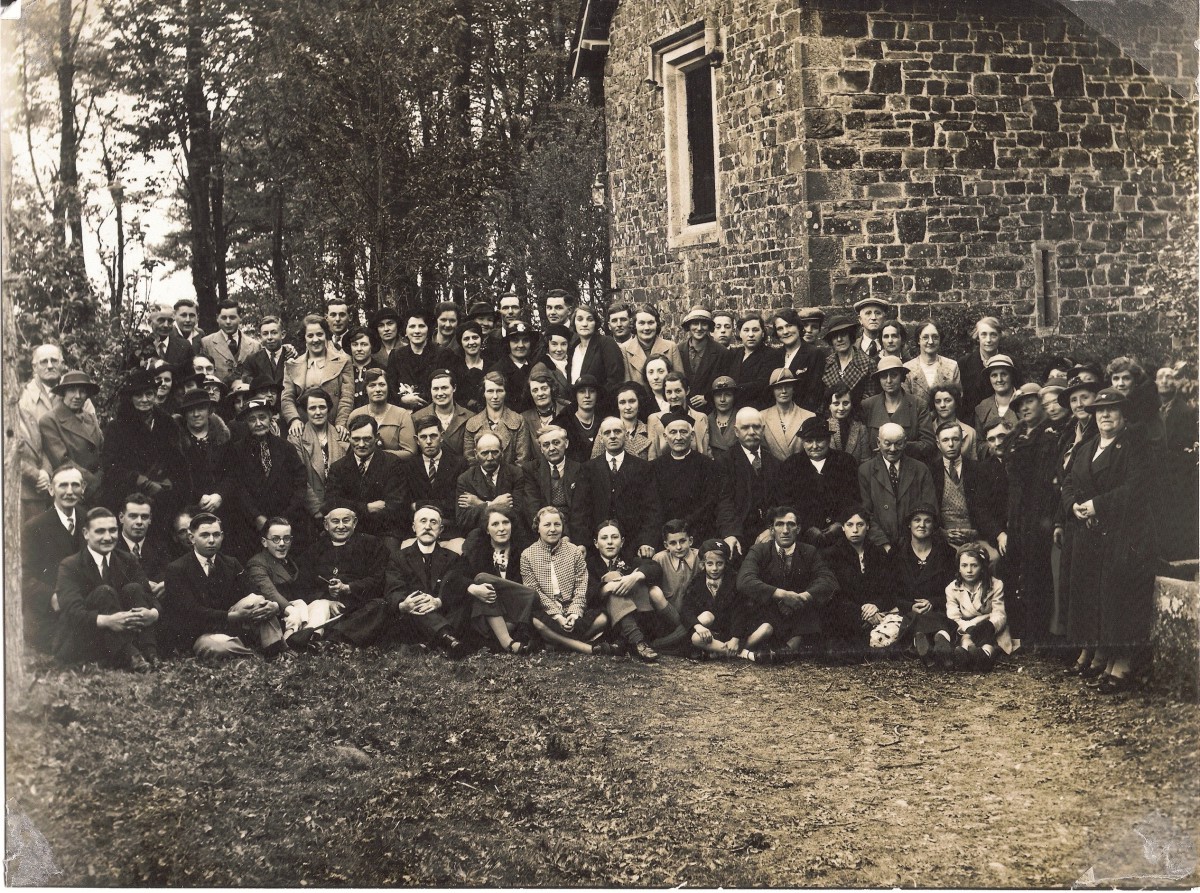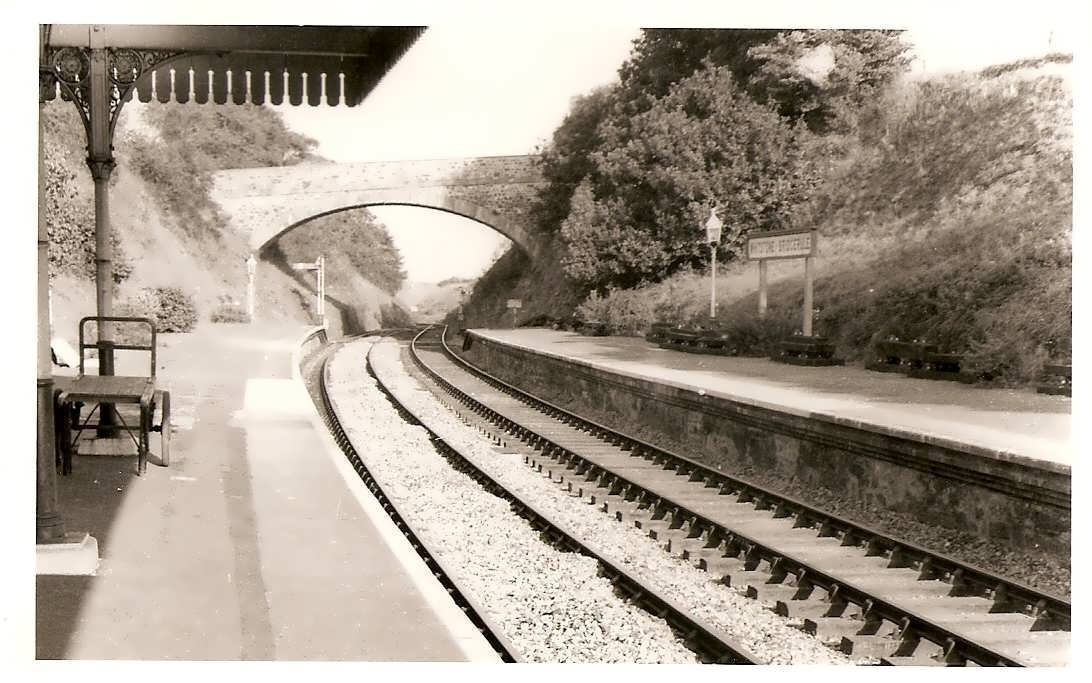 |
| www.bridgerule.co.uk |
 |
| www.bridgerule.co.uk |
|
The history of Bridgerule.... |
|
|
There is more to add and any help or old photos would be greatly appreciated
The picture to the right is the entrance to the old wheel pit at Merrifield where an underground waterwheel produced the power to move the canal tub boats between the 2 canal levels. It is a now a large underground void but the inclined plane and the canal bed can still be made out.
This used to be a very busy area with the railway passing within a few metres of the canal it put out of business and the road now passes over the disused railway line it put out of business! |
 |
|
Thanks very much to the members of the Bridgerule Parish Plan Steering Group who compiled the following account of Bridgerule in the past. Before the Norman Conquest in 1066 the local manor, Tacabre Manor (now Tackbear Manor) was owned by Frawin, a Saxon Lord. Tacabre was a very extensive manor and after the conquest it was included with 30 local manors passed to the Norman knight Ruald Adobed in return for his part in the conquest. There are 2 mentions of Bridgerule in the Domesday Book of 1086. The mill at ‘Brige’ (the pre Domesday name for Bridgerule) was one of only 4 mills recorded on the River Tamar. According to the Domesday Book it was ‘a mill which pays 4 shillings’. Also mentioned is Tacabre Manor which was by then owned by Ruald Adobed. At this time the whole district was taxed under the name of Tacabre. The modern pronunciation of Ruald is Reginald, hence the references to Bridge Reginald in many historical accounts. The name Bridgerule is therefore thought to be derived from ‘Brige’ and ‘Ruald’. East Bridgerule was in Devon in the Hundred (administrative division) of Black Torrington. West Bridgerule was in Cornwall in the Hundred of Stratton until it was transferred to Devon under the Counties (Detached Parts) Act of 20th October 1844. Bridgerule East and Bridgerule West were still treated as two separate villages for administrative purposes until 1950, the River Tamar being the divider with the village on the West and the church and school on the East. The population of Bridgerule East in 1931 was 114 and the population of Bridgerule West was 293, a total population of 407. Local people seem to have strongly resisted the division of the Parish along the Tamar and the inhabitants successfully petitioned for the two halves of the Parish to be combined. The Parish of Bridgerule was created with a Parish Council and ten Parish Councillors under an Order of the County Council on 1st April 1950.
The Parish Church, dedicated to St. Bridget was restored in 1878 and it was in 1888 Father Frank Kingdon became vicar of Bridgerule for 70 years. He died at the age of 98. It is recalled that at his first Easter as vicar he had twelve communicants at the altar. In 1925 there were 125 |
|
|
The following photo of Father Kingdon and some of his parishioners Click on the picture for a better view 
|
And the following was Father Kingdon's obituary in the Bude and Stratton Click on the picture for a better view
|
|
A new United Methodist Church built in Gothic style was opened in 1907 at a cost of about £620 to replace the old chapel which had become too dangerous to worship in. |
|
|
The following photo was taken in 1906 at the Stonelaying Ceremony Click on the picture for a better view 
|
|
|
Revel celebrations date back as far as 1830 and the revel was looked upon as one of the main events of the calendar. Most of the houses at that time were owned by one man, Mr. S. Cornish, and every year preceding the Revel he would have each house white washed thoroughly inside and out. The church on Revel Sunday was full to capacity with lots of people having to sit outside in the churchyard and the church bells would ring all day to celebrate the occasion. Skittles known as the ’kill’ were very popular also. At this time there were three public houses - The present Bridge Inn, The Kings Arms (later known as Jubilee House) and The London Inn thought to be East View House. Just before the Revel the ladies would gather at one of the pubs to bake the special buns which would later be sold for 1old penny each. Another great day for celebrations was May Day. In 1899 Olive Budd (Marcus Dymond’s grandmother) was May Queen. Children made a flower procession around the parish with their May Queen. This would then be followed by a public tea. Much of the business around the village in 1901 was farming. It was the main occupation of many fulltime and casual labourers of the parish; farmers then being the main producers of food for the whole country. Some farms were farmed for generations by the same family. The Mill was used by the farmers to grind their corn but unfortunately, just as farming was beginning to decline at the turn of the century, the Mill was suffering also. Carpenters and Wheelwrights for generations were carried on by the Budd family much later to become R. Dymond and Son. Their sawmills were at The Wharf (now part of Littlebridge Meadow) just above the then aqueduct, the aqueduct being demolished in the latter part of the last century due to the coming of the Railway which superseded the need for a Canal. In1902 the Bridgerule and Whitstone Brickworks were built with Tackbear moorland supplying the clay for the bricks and the newly laid railway line to Bude supplying the transport. The first brick made was placed over a doorway at Tackbear Manor and the houses of Arthmead and Hollybank were built completely from bricks made at the Brickworks. These, and many others of past generations, maintained the traditions and customs of life in Bridgerule. They were diligent in their work and in their worship - be they Church, Wesleyan or Bible Christian. More recently a number of local people, including Mr Owen Harris Braund and his brother Lewis aged 22 and 29 respectively perished on the maiden voyage of the Titanic in 1912. They were travelling 3rd class: fares cost around £7.50, one way of course!!
|
|
|
More historic information on Bridgerule can be found on the following websites |
 |
|
Please email any comments, suggestions, news, photos or announcements to info@bridgerule.co.uk www.bridgerule.co.uk - |
|
|
| www.bridgerule.co.uk |